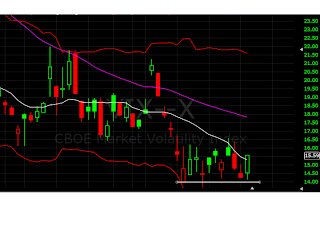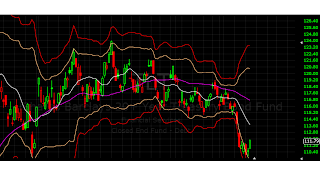This is an interesting moment for constitutional law. Are there limits to the commerce clause? What is the balance of Federal vs. State power? But this is an awful conversation for thinking about reasonable health-insurance and health-care regulation.
The central constitutional weakness of the law is the "individual mandate." We're all supposed to buy insurance, and if we don't we pay a penalty. So everyone is hot and bothered discussing the mandate. But the mandate is far from the central economic problem with the law. So, as a country, we're like a squabbling couple, fighting over who should do the dishes, when the real problem is "why did you buy that stupid boat?"
Thinking of modifications to the law that make it constitutional are a pretty bad guide to modifications that make it better (less disastrous) economic policy.
For example, the consensus seems to be that a complete government takeover would be constitutional. After all, medicare is, so far, constitutional; so "medicare for all" would likely survive in the Supreme court. The states have the "police power" to impose mandates. And if the Administration had just had the courage to call it a "tax," the constitutional fight would be over. I don't think opponents have any of these outcomes in mind. Be careful what you wish for, you just might get it!
I noticed a gaping hole in the arguments: If not this, then what? The law wants "necessary and proper." The opponents seemed pretty strong on the (im) "proper" part, but not so good on the (un) "necessary" part. The Republicans say "repeal and replace" but not very clearly with what. The Administration's argument that health care and insurance markets are pretty dysfunctional went unanswered. This exchange (from the transcript at NPR) sums it up:
GENERAL VERRILLI: ...what matters here is whether Congress is choosing a tool that's reasonably adapted to the problem that Congress is confronting. ....In other places the justices seemed pretty nervous about just throwing out the law and leaving the country in a mess. Though in principle im-"proper" should be enough, it would have been more convincing with a clear statement that reasonable alternatives to the whole mess exist.
JUSTICE SCALIA: Wait. That's — that's -it's both "Necessary and Proper." What you just said addresses what's necessary.... But in addition to being necessary, it has to be proper. And we've held in two cases that something that was reasonably adapted was not proper because it violated the sovereignty of the States, which was implicit in the constitutional structure.
As blog readers will have guessed, I think the central problem is pathology of previous legislation and regulation, and the answer is competition and deregulation. (Links below) I was interested that Solicitor General Verilli also pretty clearly blamed the dysfunction of the health care market on...previous legislation and regulation! From his opening statements:
.. for more than 40 million Americans who do not have access to health insurance either through their employer or through government programs such as Medicare or Medicaid, the system does not work. Those individuals must resort to the individual market, and that market does not provide affordable health insurance.
It does not do so ..because the multibillion dollar subsidies that are available for the.. employer market are not available in the individual market... That is an economic problem.No, that's a regulatory problem! But if "multibillion dollar subsidies" for the employer-based group market are what killed the individual market, maybe, just maybe, the answer is to get rid of those subsidies?
Economists left, right and center have bemoaned the effects of the tax deduction for employer-provided group insurance. If your employer or you contribute to an individual plan, which you can take with you from job to job, and has guarantees that you won't be dropped if you get sick, it's not tax deductible.
Why is individual health insurance "unaffordable?" Because both Federal and State regulators have salted it up with mandated coverage that people wouldn't buy on their own. Young, healthy, uninsured need simple catastrophic coverage, or even just a contract that allows them to buy insurance later if they need it. They can't buy it because it's regulated out of existence.
Those same people could pay cash for their non-catastrophic expenses. In a functioning market, like car repair, or vet services for your dog, you can pay cash and receive services. Lack of insurance is only a problem for a small sliver of people who don't have enough money for an unexpectedly large needed service. But it's essentially impossible to just pay for health care. As Solicitor General Virilli pointed out
The Affordable Care Act addresses a fundamental and enduring problem in our health care system and our economy. Insurance has become the predominant means of paying for health care in this country.But whose fault is that? Isn't the answer to deregulate the cash market so it functions again, and remove payments for regular predictable expenses -- and the huge moral hazard that such payment engenders -- from legally mandated "insurance?"
I noticed two other curiosities in the economic part of the Supreme Court discussion.
First, nobody mentioned the fact the mandate is unworkable. The penalty for not buying health insurance is much less than the cost of buying insurance. Moreover, consider the stereotype uninsured person: making say $50,000 a year when employed, but perhaps unemployed right now, with health problems that make getting insurance or employment hard, maybe facing financial pressures. This might be the typical person that the Administration is trying to shower with mortgage forgiveness. We're really going to make a person like that pay a substantial fine for not having health insurance? Right.
Second, the central argument for the mandate in the Supreme Court is the cost of emergency room care for uninsured people. This argument is correct as a matter of economics, but it is trivial in magnitude. Yes, if you are a charitable society that won't let people die in the gutter, then there is moral hazard that people will take advantage of charity and not protect themselves.
But emergency room and charity care for the uninsured is a trivial part of our bloated health-care expenses. The real expense problem is over-use (moral hazard) by people who have insurance, and by their doctors. (Honest doctors have a strong incentive to practice defensive medicine, for fear of being sued; and a few less-honest doctors have an incentive to pad the bill. After all, insurance is paying.) This is what's driving the cost of insurance so high that people choose not to buy it, and the reason they have to be forced to do so. We could easily pay for charity care for the small number of indigent uninsured in an otherwise functioning market.
The uninsured and preexsiting conditions are a real economic problem. The health law's answer is to force insurers to sell everyone insurance at the same price, and to force "insurance" to cover every imaginable expense. If you do that, the price is very high, so you have to force healthy people to join. Given "guaranteed issue" the mandate is needed. Yes, that makes the elements inseparable, so if the court strikes down the mandate, it has to strike down guaranteed issue as well. But that also means opponents need a clear alternative to a genuine problem.
But there is a simple economic answer: individual, portable insurance that includes the right to buy insurance in the future. For more, see previous Articles, Opeds, Blog posts. This approach recognizes that our current troubles are, as Solicitor General Verilli amazingly admitted, creatures of past legislation and regulation, not intrinsic market failures. And this can be the heart of a coherent deregulation strategy.
(Yes, I know there are theoretical problems with health care and insurance markets,adverse selection, asymmetric information. But we've never tried it to see just how bad those problems are in a really deregulated and competitive system. The same theories predict that markets for used cars, car repair, vet services and dentistry should not exist. Just perhaps, the legal and regulatory burdens are what cause dysfunction in health insurance and care markets, not theoretical economic problems.)
This case also strikes me as a poor test case for the commerce clause. I'm rooting for the overturn of Wickard v. Filburn too. (This is the 1942 case against a farmer who grew wheat to make his own bread, in violation of Federal wheat production limits. If that's "interstate commerce" so is anything.) But the mandate is really a poor case for thinking about the limits of Federal economic regulation, as its constitutional problems are a poor framework for thinking about health reform. As I'd hate to end up with a constitutional "medicare for all" solution, or "current law but replace 'mandate' with 'tax'", so I'd hate to end up with "the only limit imposed by the commerce clause is that the Federal Government can't force you to buy something."
One little piece of good news:
"GENERAL VERILLI: ..The — the rationale purely under the Commerce Clause that we're advocating here would not justify forced purchases of commodities for the purpose of stimulating demand"Whew! Write that in stone, please.







































